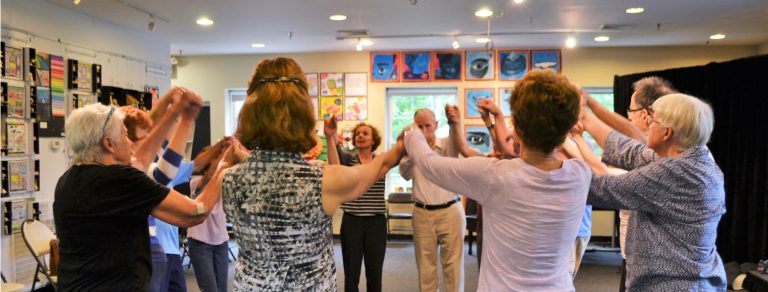Anna de la Paz: Dancing on the Borderline
For almost a year, dancer Anna de la Paz has facilitated rehearsals and collaborated with a group of young artists. They were all working towards a full presentation of De La Paz’s original choreography, Dancing on the Borderline, which premieres in two locations in Rockland County on October 1: Finkelstein Memorial Library (3pm) and The Salvation Army headquarters (6pm), both in Spring Valley
De la Paz, a Spanish dance artist, producer, educator and performer, spent many summers of her childhood in Spain, practicing dance and connecting with her culture thanks to the encouragement of her mother. She went on to specialize in classical and folkloric dance. Says La Paz: “The bug bit me and I just went to town.”
Dancing on the Borderline was born as a combination of De la Paz’s professional artistry and passion for serving her community. The various dance techniques were her language – her method of expression. She adds that one thing she always tells her young dance students is ‘Your voice counts.’”
With support from ArtsWestchester’s Voices for Change grant, the project culminates in an event that combines various forms of artistic expression. De la Paz explains: “The performance is going to feature dances from the Hispanic world, and the narrative of the whole performance is about empowerment.”
The grant-funded choreography residency includes young dancers primarily from the East Ramapo School district, and emphasizes dance and artistry as means for social justice. These young dancers developed their perspectives through dance and came out of the experience with new tools to shape their own impact on their communities. Immigrant-led Proyecto Faro, an organization that nurtures the undocumented immigrant community, acts as a community partner and collaborator on the event.
Dancing on the Borderline is all about giving voice to neighbors. The choreography represents ties to tradition by intermixing various aspects of Hispanic dance, while the musical arrangement pays homage to Spanish pride and culture. Maureen Termecz facilitated the making of the costumes, including fans, props and signage, each designed by the dancers and representing what that individual hopes to convey. Fredy Villarreal, an instructor and specialist in Mexican and Ecuadorian dance, also assisted in the development of the piece that features youth in underserved communities.
A new musical arrangement by Glenn Schloss supplements the dancers with a percussive composition that explores the Hispanic world. De la Paz hints: “It’s going to knock the socks off of everyone.”
While De la Paz will be presenting dances from Spain during the overall event, the production will also showcase inspirations from Ecuador, Mexico, the Dominican Republic, Venezuela and more. A musical accompaniment and interludes originating from different countries will play alongside the performance. Dancing on the Borderline is the finale– a creative dance, incorporating movement ideas from all over the Hispanic world. De la Paz says of the work: “The idea of the piece is that the dancers are finding their voice. It’s as if they’re in a protest. With signs, manifestation protests. And finding their voice in that.”
Live musicians, including Elaina Burns, Edith Ramirez and Enrique Lopez will accompany the dancers, offering more texture and an immersive experience for audiences. Dancing on the Borderline will synthesize visual art, music and dance as different points of creative entry for audiences, helping them to “find joy in the solidarity.”
You May Also Enjoy:







